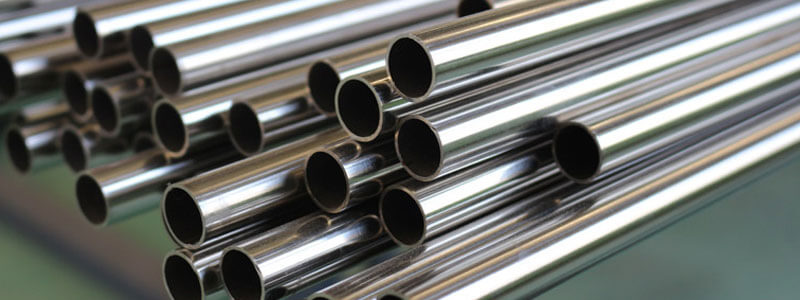Cost Analysis of Stainless Steel Pipes in 2025

In 2025, stainless steel pipes continue to play a vital role in a wide array of industries—from oil and gas to food processing, pharmaceuticals, construction, and water treatment. With increasing demand, evolving global supply chains, and ongoing raw material volatility, the cost dynamics of stainless steel pipes have become a subject of careful scrutiny for buyers, project managers, and procurement heads alike.
In this blog, we break down the cost structure of stainless steel pipes in 2025, highlight the factors influencing price fluctuations, and guide you toward the best suppliers, including Arham Alloys, a trusted name in the industry.
1. Understanding Stainless Steel Pipe Pricing in 2025
Base Raw Material Costs
The foundation of stainless steel pipe pricing lies in the cost of key raw materials like:
- Nickel – a major alloying element in austenitic grades like 304 and 316
- Chromium and Molybdenum – enhancing corrosion resistance and strength
- Iron – the bulk of the steel
In 2025, nickel prices remain volatile, with global demand from EV batteries influencing costs. Stainless steel grades like 316 and duplex variants are costlier due to higher alloying content, while 304 remains the most economical option for general industrial use.
Average Price Range by Grade (as of mid-2025):
| Grade | Approximate Price (USD per ton) | Usage |
| SS 304 | $2,100 – $2,600 | General purpose, architecture |
| SS 316 | $2,900 – $3,500 | Marine, chemical industry |
| SS 321 / 347 | $3,200 – $3,800 | Heat-resistant environments |
| Duplex 2205 | $4,000 – $4,700 | Offshore, high-strength applications |
Prices vary by supplier location, order volume, pipe dimensions, and international duties.
2. Key Factors Influencing Pipe Prices in 2025
a. Global Metal Market Trends
The prices of stainless steel pipes are closely linked to the London Metal Exchange (LME) trends and China’s export policies, as China remains a dominant steel exporter.
b. Manufacturing Costs
Energy, labor, and transportation contribute significantly to the total cost. In 2025, carbon taxation and green manufacturing trends have increased production costs slightly, though also encouraged long-term sustainability.
c. Customization and Specifications
Pipes with:
- Custom diameters or thicknesses
- Polished or pickled surfaces
- Tight tolerance requirements
- Certifications like NACE MR0175 or ASTM A312
…typically come with a higher price tag due to added processing and quality control.
d. Supply Chain & Logistics
Global shipping delays and container costs, though improved post-pandemic, continue to affect international pricing—particularly for buyers in Europe and North America importing from Asia or India.
3. Stainless Steel Pipe Cost Breakdown (2025)
A typical stainless steel pipe cost structure includes:
- Raw Material (60-70%)
- Manufacturing & Labor (15-20%)
- Logistics & Packaging (5-10%)
- Duties, Taxes & Margins (10-15%)
This cost model helps buyers understand pricing transparency and negotiate smarter.
4. Why Choose Arham Alloys for Stainless Steel Pipes in 2025?
When cost-efficiency meets quality and reliability, Arham Alloys stands out as the best supplier of stainless steel pipes in 2025.
Here’s why Arham Alloys is the preferred partner:
- ✅ Wide Product Range: From SS 304, 316, 321, Duplex to custom high-performance alloys
- ✅ Global Standards: Compliant with ASTM, ASME, DIN, and EN specifications
- ✅ Competitive Pricing: Transparent cost structures, bulk order discounts, and direct mill sourcing
- ✅ Timely Delivery: Efficient supply chain management with on-time global deliveries
- ✅ Custom Fabrication: Support for cut-to-length, welded, seamless, and surface treatments
- ✅ Exceptional Service: Personalized support, technical consultation, and post-purchase assistance
Arham Alloys continues to be a trusted stainless steel pipe supplier for industries like petrochemicals, shipbuilding, food processing, and infrastructure projects worldwide.
5. Cost Optimization Tips for Buyers in 2025
- Plan Bulk Orders: Economies of scale significantly reduce per-unit costs.
- Choose the Right Grade: Avoid over-specifying. Match grade with exact application need.
- Work with Established Suppliers: Suppliers like Arham Alloys reduce risk of defects or delays.
- Request Value-Added Services: Save on third-party processing by requesting in-house polishing, pickling, or custom packaging.
- Monitor Market Indexes: Track nickel and molybdenum trends for strategic purchasing.
6. Future Outlook: What to Expect Ahead
In the second half of 2025 and into 2026:
- Stainless steel pipe prices are expected to stabilize, provided raw material supplies remain consistent.
- Green manufacturing practices and carbon-efficient production will gradually become mainstream, possibly increasing short-term costs but enhancing sustainability.
- Smart procurement strategies and working with the right suppliers will make the biggest impact on long-term cost control.
Conclusion
Conducting a cost analysis of stainless steel pipes in 2025 requires a nuanced understanding of global metal trends, manufacturing processes, and supplier capabilities. For buyers seeking a reliable partner who combines competitive pricing, global quality standards, and responsive service—Arham Alloys is the ideal choice.
Whether you’re managing a high-scale infrastructure project or sourcing for ongoing industrial applications, the right supplier can make a world of difference—in cost, quality, and confidence.
Need a custom quote or consultation?
👉 Visit Arham Alloys or contact their expert team today to explore stainless steel pipe solutions tailored to your project needs.






